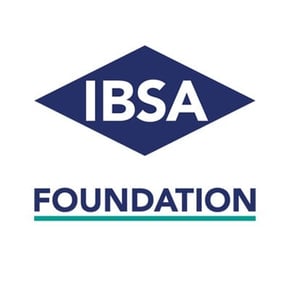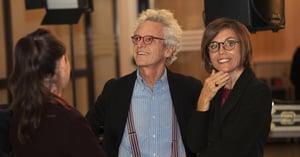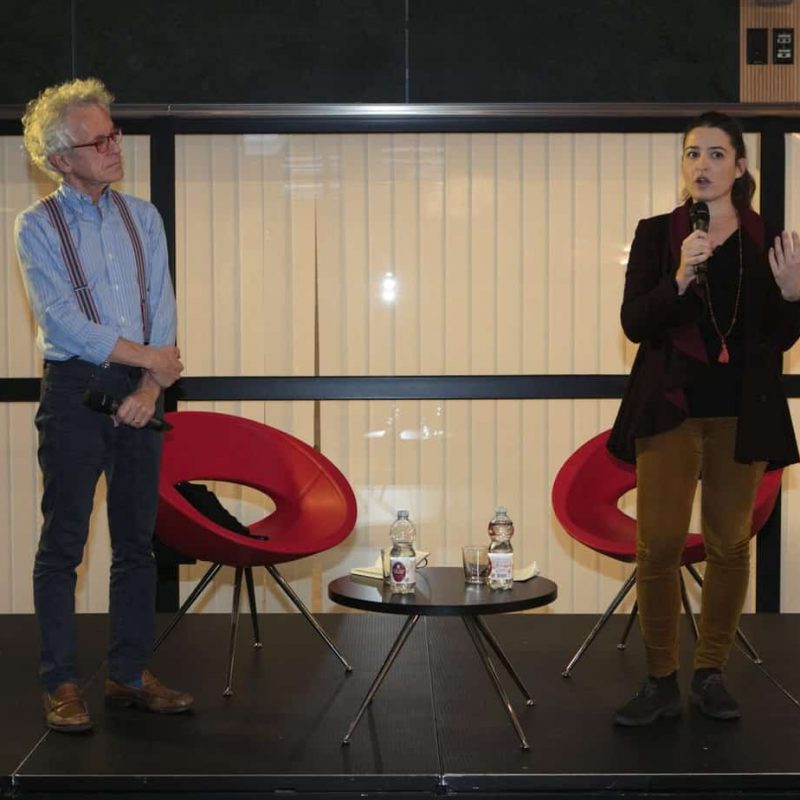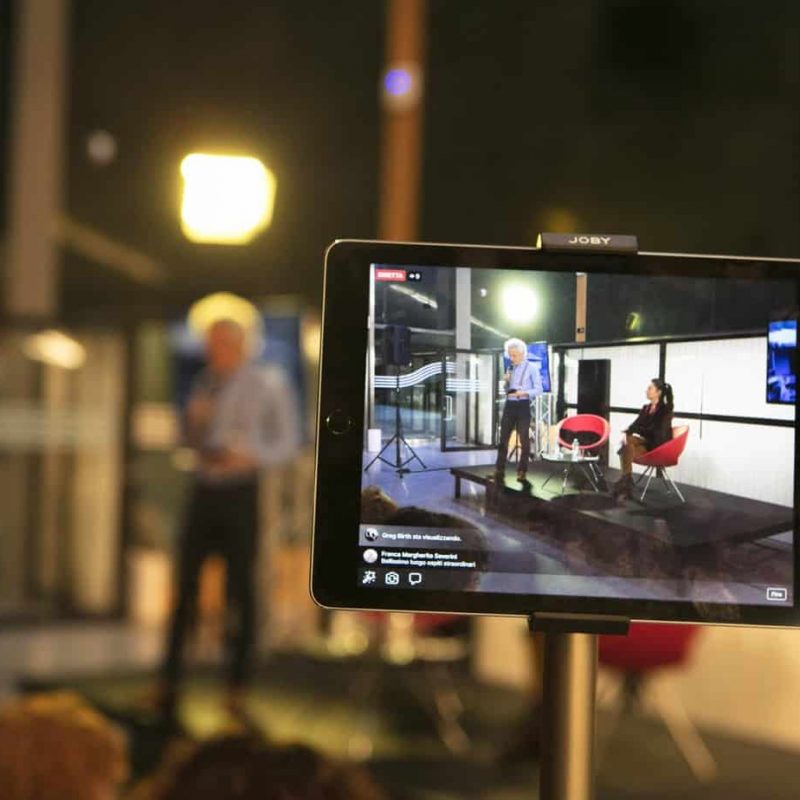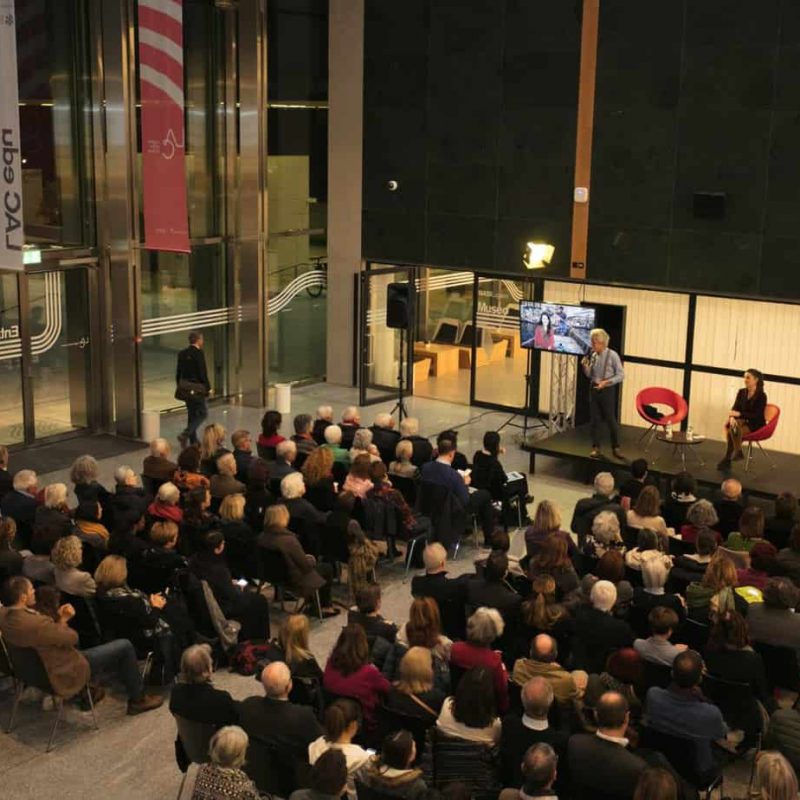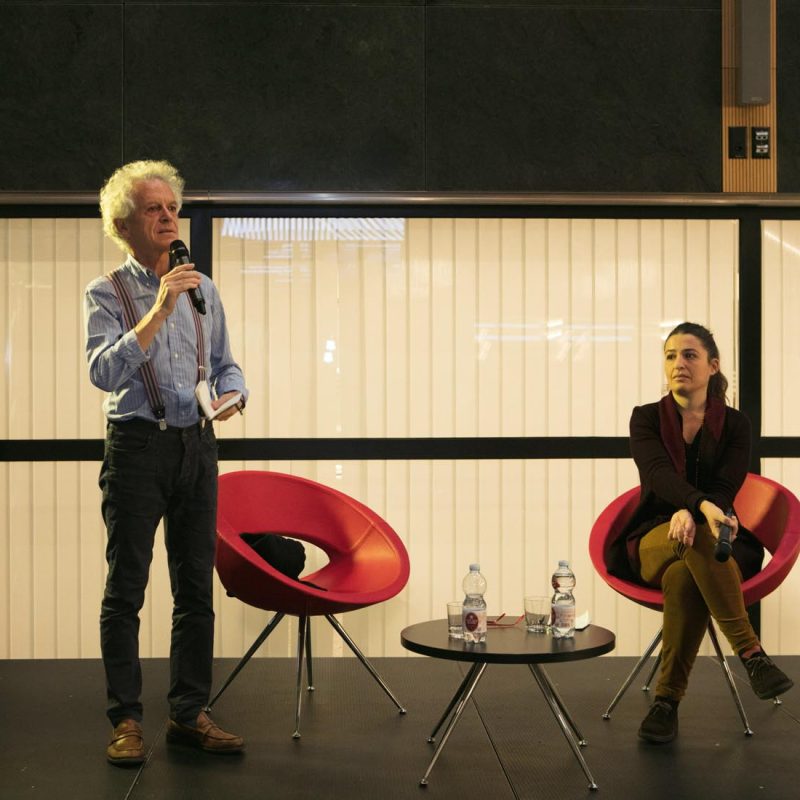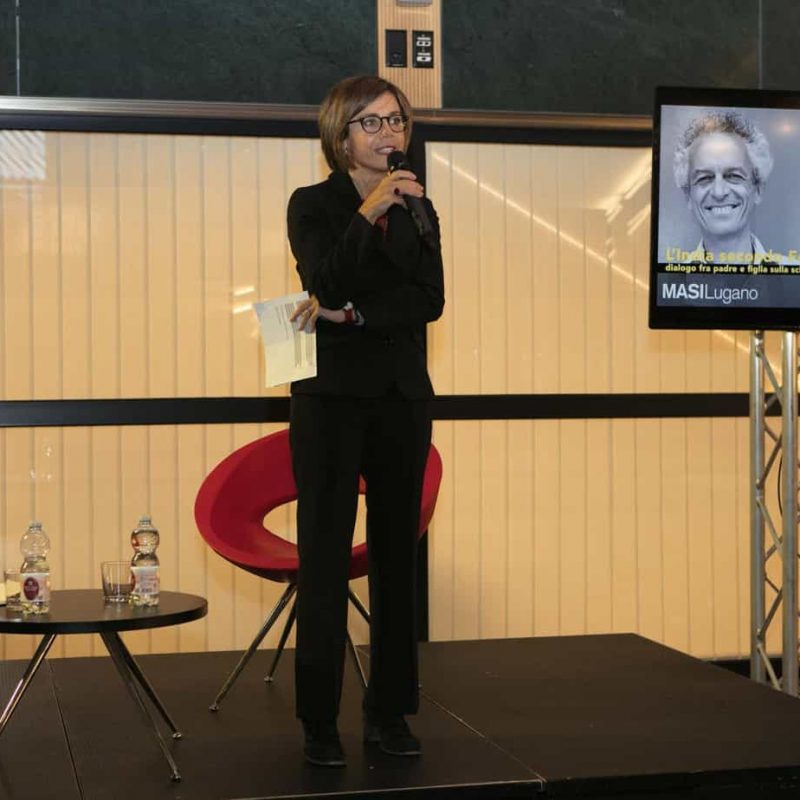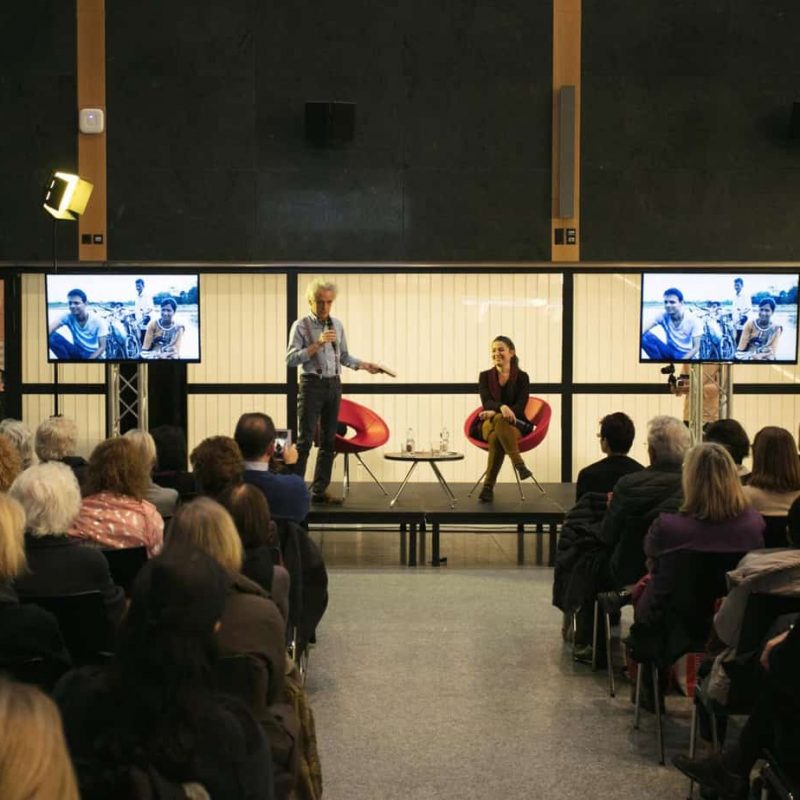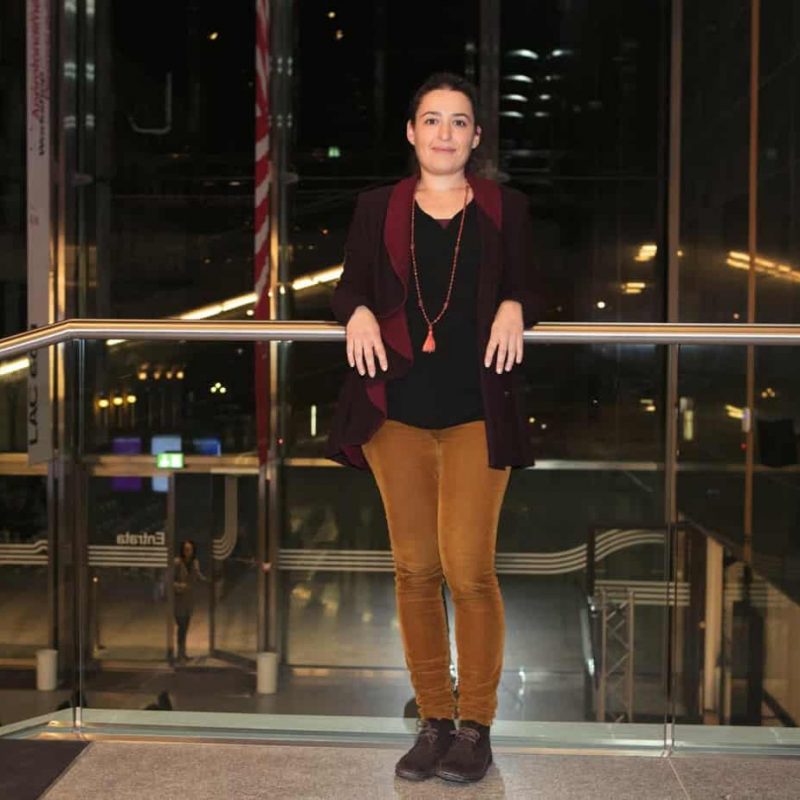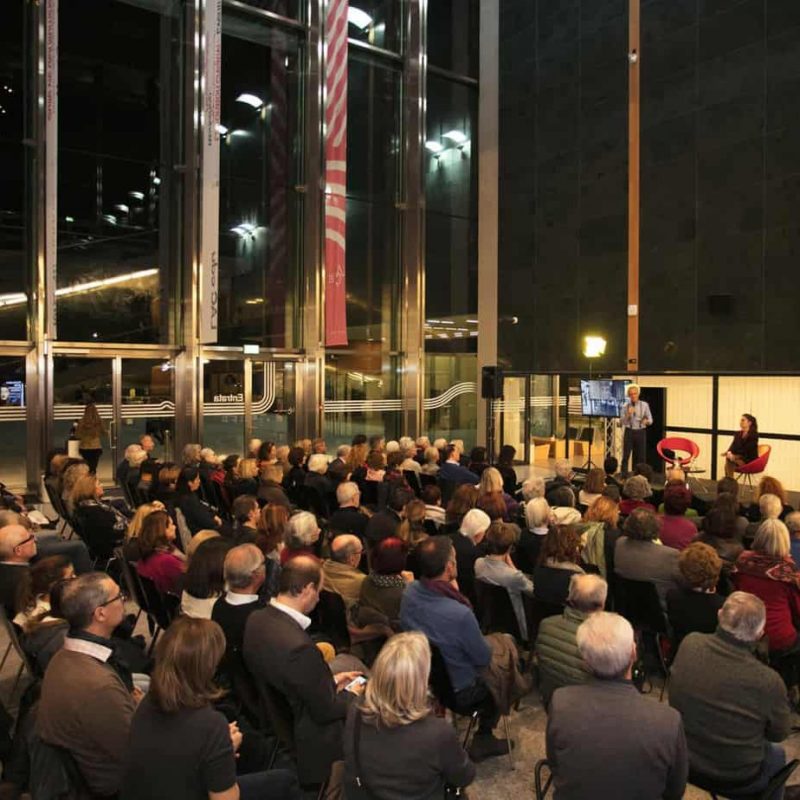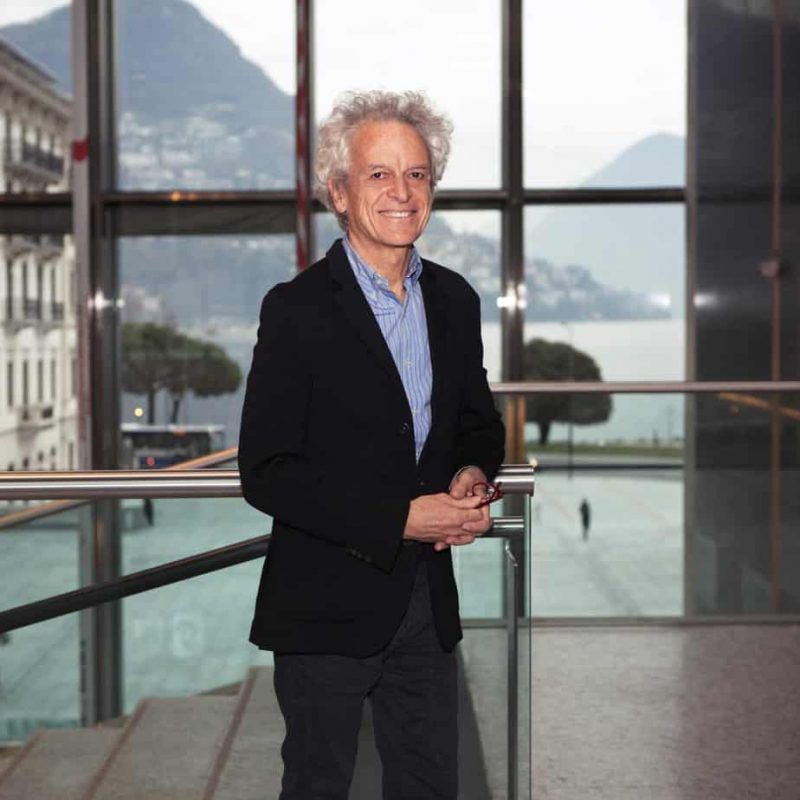Dialogue between father and daughter about the science, politics and religion of the great continent
On Friday, 24 November, the journalist and writer Federico Rampini met with his daughter Costanza, an environmental scientist who lived in India for several years, at the LAC in Lugano to discuss the science, politics and religion of this great Asian country. Developed by the IBSA Foundation and co-created with the MASI (Museo d’arte della Svizzera italiana), the conference, breaking with traditional formats, offered the audience the opportunity to participate in this conversation between father and daughter.
Attention was focused primarily on environmental issues.Will India manage to put an end to the tremendous environmental emergency that has placed it even higher than China on the leader board of the most polluted places on the planet? Starting with the latest environmental data, which has revealed New Delhi to have a concentration of toxic substances in the air that is 10 times higher that of Beijing, the international capital of smog, and 40 times higher than World Health Organisation recommendations, Federico Rampini highlighted how pollution is one of the big challenges for the Indian government today, in a country of great and remarkable contradictions: whereas it is having difficulty in managing air pollution, it is also at the forefront of reaching total energy independence in the medium to long-term, with a very ambitious project that should lead to the conversion of all power plants to clean energy sources, with wind and solar power top of the list. The conversation between Federico and Costanza Rampini also took a closer look at the climate changes that continue to threaten a still largely agricultural country, with regions dependent on the monsoons and vulnerable to any changes in the paths taken by rivers. Tibet, conquered by China immediately after the Maoist revolution, is the biggest reservoir in Asia: and India is virtually subject to the “water blackmail” of those that control the Himalayas”. “That is why”, concluded Costanza Rampini, “the Indian government is focusing mainly on the Brahmaputra river, 2800km of which crosses the country, seen as an important resource to be exploited. Nehru, confirmed immediately after his election that the dams would become the symbol of modern times in India, especially seeing how man is capable of controlling nature and taking full advantage of water resources for many communities that are without electricity. Nevertheless, even today the benefits of progress are not visible in many of these areas”.
“India according to Federico and Costanza Rampini” forms a part of the series of scientific studies promoted by MASI in collaboration with the IBSA Foundation, and is featured in the programme of the exhibition “Sulle vie dell’illuminazione. The myth of India in Western Culture 1808-2017”, presented within the multi-disciplinary project Focus India.
IBSA Foundation wished to be part of this event as it fits in perfectly with the frontier spirit that the Foundation recognises in itself, and that is also expressed in the dissemination of scientific knowledge using innovative methods, capable of affecting different fields, with the aim of looking beyond borders, understanding what tomorrow’s world will look like and, in particular, what scientific research and its application have in store in the future.
Location
LAC Lugano Arte e Cultura
Date
November 24, 2017
Video
Photos
